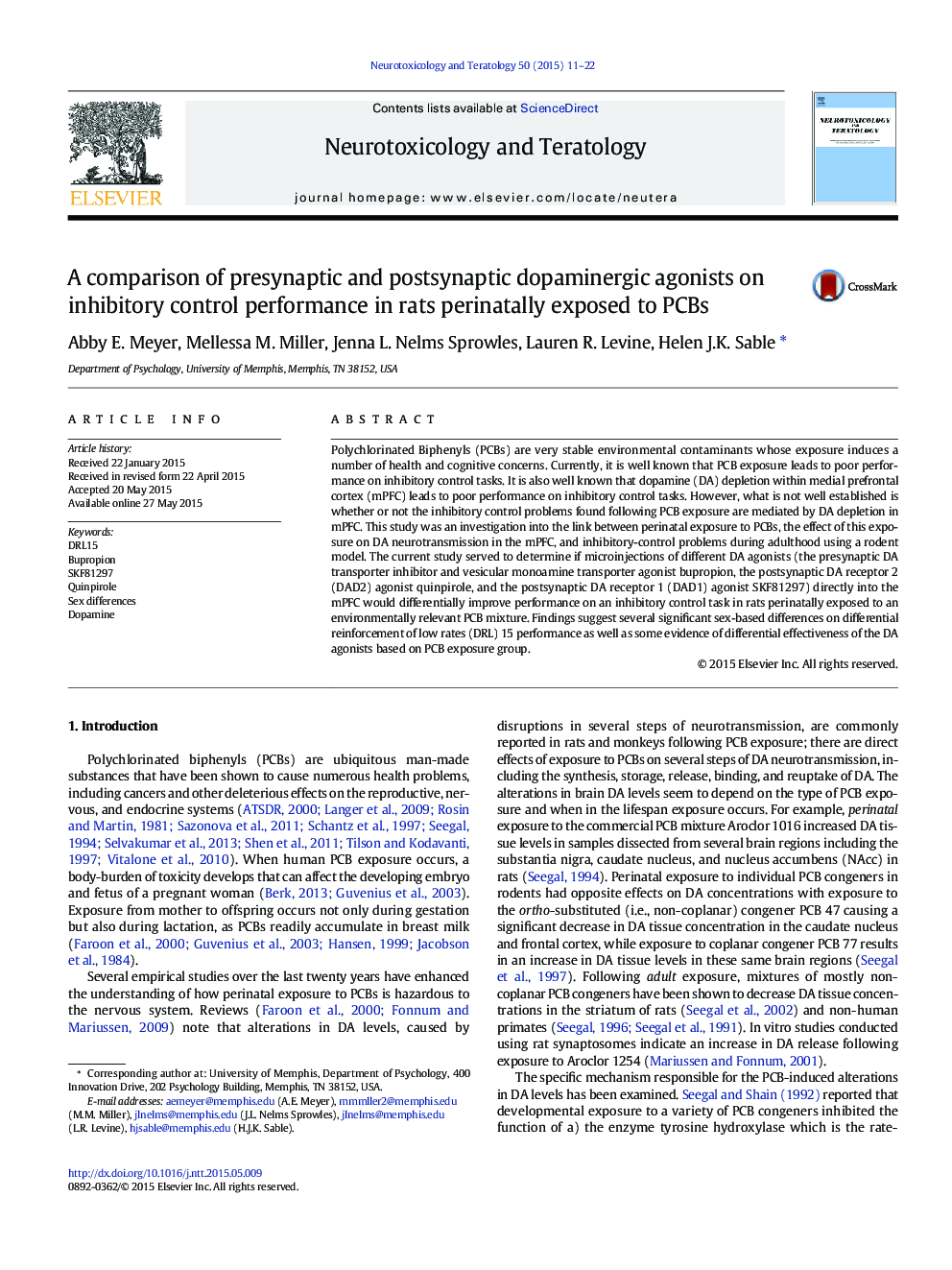| Article ID | Journal | Published Year | Pages | File Type |
|---|---|---|---|---|
| 2590872 | Neurotoxicology and Teratology | 2015 | 12 Pages |
•Long Evans rats were perinatally exposed to 0, 3, or 6 mg/kg/day PCBs.•Offspring were tested on an inhibitory control task after microinjection of one of three different DA agonists into mPFC.•Four doses each of bupropion, SKF81297, and quinpirole were used (n = 6-9 male–female littermate pairs/exposure group/drug).•Increasing doses of each DA agonist provided a performance benefit but no unique therapeutic benefit to PCB-exposed animals.
Polychlorinated Biphenyls (PCBs) are very stable environmental contaminants whose exposure induces a number of health and cognitive concerns. Currently, it is well known that PCB exposure leads to poor performance on inhibitory control tasks. It is also well known that dopamine (DA) depletion within medial prefrontal cortex (mPFC) leads to poor performance on inhibitory control tasks. However, what is not well established is whether or not the inhibitory control problems found following PCB exposure are mediated by DA depletion in mPFC. This study was an investigation into the link between perinatal exposure to PCBs, the effect of this exposure on DA neurotransmission in the mPFC, and inhibitory-control problems during adulthood using a rodent model. The current study served to determine if microinjections of different DA agonists (the presynaptic DA transporter inhibitor and vesicular monoamine transporter agonist bupropion, the postsynaptic DA receptor 2 (DAD2) agonist quinpirole, and the postsynaptic DA receptor 1 (DAD1) agonist SKF81297) directly into the mPFC would differentially improve performance on an inhibitory control task in rats perinatally exposed to an environmentally relevant PCB mixture. Findings suggest several significant sex-based differences on differential reinforcement of low rates (DRL) 15 performance as well as some evidence of differential effectiveness of the DA agonists based on PCB exposure group.
